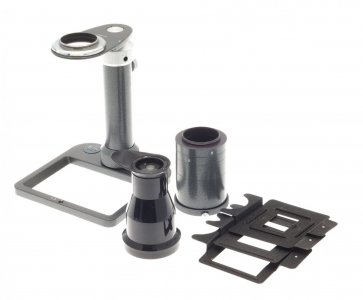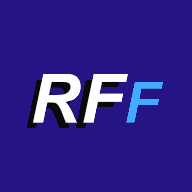hellojamin
Member
Thank you for the warm welcome and the detailed technical info!Thank you for the kind words, @hellojamin, and welcome to the forum!
All my B&W photos are home developed and digitized using an old Sony NEX-5T digital camera. I use a Voigtlander VM-E close focus adapter on a Leica BEOON copy stand, with an EL-Nikkor 50mm f/2.8 enlarging lens, and a Huion L4S light pad from Amazon. For 120 film, I take two (or three for 6x7) overlapping frames, and merge them in Lightroom using the "Panorama Merge" function. I hope that helps!
Benjamin Marks
Mentor
How do you assure that your sensor is parallel to the image? Is there some sort of register, or do you like things up by eye?Thank you for the kind words, @hellojamin, and welcome to the forum!
All my B&W photos are home developed and digitized using an old Sony NEX-5T digital camera. I use a Voigtlander VM-E close focus adapter on a Leica BEOON copy stand, with an EL-Nikkor 50mm f/2.8 enlarging lens, and a Huion L4S light pad from Amazon. For 120 film, I take two (or three for 6x7) overlapping frames, and merge them in Lightroom using the "Panorama Merge" function. I hope that helps!
Freakscene
Obscure member
The BEOON is designed for copying film and is a fixed copy stand with a height adjustment for focus and subject size. The camera and lens mounts are held parallel to the lens plane unless it is bent.How do you assure that your sensor is parallel to the image? Is there some sort of register, or do you like things up by eye?

Slumgullion
Established
I use a similar method with a copy stand modified with an adjustable tripod head. You can use a level at various points on the camera (hot shoe, back of body), but the best way to ensure square-ness is to use a mirror in the focal plane and center the lens within the mirror (by eye). There are a few YouTube videos that describe it better than I just did...but it really works.How do you assure that your sensor is parallel to the image? Is there some sort of register, or do you like things up by eye?
SWB
Member
Get a bubble level app for your iPhone and lay it on the cameras LCD. If buttons etc stop it laying flat use a spacer.How do you assure that your sensor is parallel to the image? Is there some sort of register, or do you like things up by eye?
sojournerphoto
Mentor
Make sure spacer has flat and parallel facesGet a bubble level app for your iPhone and lay it on the cameras LCD. If buttons etc stop it laying flat use a spacer.
Slumgullion
Established
Also, why the mirror method is better, in my opinion. It doesn’t matter how flat the back of your camera (or spacers) might be. Additionally, by putting the mirror in the focal plane on on your negative holder you square the camera to the negative rather than just making the camera level and forgetting to consider the level-ness of your copy stand base and negative holder.Make sure spacer has flat and parallel faces
I say this based on my personal experience. I used a bubble level on the back of camera for years and struggled to get consistently flat/level scans.
SWB
Member
Make sure spacer has flat and parallel faces
I honestly didn't think I needed to say that, but your experience of the forum members is greater than mine.
As regards the levelness of the copy stand you can of course use a bubble level on that, it is not exclusive to the back of the camera. Indeed it doesn't even need to be the back of the camera, it could be the lens mount if you take the lens off, or up against the filter ring. Unless you are using F/1.4 as your aperture for copying you don't need lasers to align the camera.
sojournerphoto
Mentor
Sorry, it was light humour rather than a comment on our members! We have a fabulously able peer group here.I honestly didn't think I needed to say that, but your experience of the forum members is greater than mine.
As regards the levelness of the copy stand you can of course use a bubble level on that, it is not exclusive to the back of the camera. Indeed it doesn't even need to be the back of the camera, it could be the lens mount if you take the lens off, or up against the filter ring. Unless you are using F/1.4 as your aperture for copying you don't need lasers to align the camera.
One observation though is that the sensor may not be parallel to the back of the camera or screen. I use the mirror method for that reason and usually use g5.6 or 8 for digitising.
dourbalistar
Buy more film
@Benjamin Marks, as @Freakscene mentioned the Leica BEOON is an adjustable stand designed for copying. For some reason, the photo Marty posted has two "B" extension tubes. The center column is a threaded helicoid and very easy to adjust. I learned about the BEOON from this thread here on the forum:How do you assure that your sensor is parallel to the image? Is there some sort of register, or do you like things up by eye?
BEOON the Leitz Copy Stand
I just got this in the mail. BEOON full kit including the box and original user manual. It looks pretty much mint/never used. The idea was to use this with my Monochrom v1. Since the kit comes with a magnifier with focusing screen, you can grain check with non-live-view digital M. Of course...
 rangefinderforum.com
rangefinderforum.com
In any case, back to the topic of this thread!
Nikon FM2n, AI Nikkor 50mm f/1.8S, Kentmere Pan 400, developed in LegacyPro L110 at 1:31 for 5.5 minutes.

2023.11.24 Roll #344-08406-positive.jpg by dourbalistar, on Flickr
Freakscene
Obscure member
@Benjamin Marks, as @Freakscene mentioned the Leica BEOON is an adjustable stand designed for copying. For some reason, the photo Marty posted has two "B" extension tubes. The center column is a threaded helicoid and very easy to adjust. I learned about the BEOON from this thread here on the forum:
BEOON the Leitz Copy Stand
I just got this in the mail. BEOON full kit including the box and original user manual. It looks pretty much mint/never used. The idea was to use this with my Monochrom v1. Since the kit comes with a magnifier with focusing screen, you can grain check with non-live-view digital M. Of course...rangefinderforum.com
Hmmm, yes, indeed. Two B tubes. I have a box of BEOONs and accessories. When I set these up I guess I grabbed two Bs instead of an A and a B. I think it was from when I put one up for sale a while ago.
Marty
dourbalistar
Buy more film
You have the special edition Leitz BBEOON. 😂Hmmm, yes, indeed. Two B tubes. I have a box of BEOONs and accessories. When I set these up I guess I grabbed two Bs instead of an A and a B. I think it was from when I put one up for sale a while ago.
Marty
Share:
-
This site uses cookies to help personalise content, tailor your experience and to keep you logged in if you register.
By continuing to use this site, you are consenting to our use of cookies.

